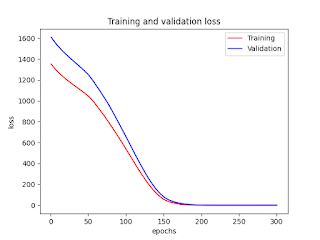- For asset allocation decisions, what matters is expected return in excess of the investor’s risk-free rate, i.e., excess return, not expected total return.
- Mechanically and empirically, positive long term excess returns in bond markets are not generated by high (or low) yield levels but rather the average upward slope of yield curves.
- Some measures of expected excess returns are low relative to history for bonds, as well as for equities. But tactical timing has an unimpressive track record, especially when based solely on valuation, and humility is therefore warranted in sizing tactical tilts. Even in a low yield environment, there are plausible scenarios where yields could go much lower.
- While bonds should not be considered risk-reducing hedges, evidence does suggest they can remain useful diversifiers in many market environments. Investors should be cautious about forgoing potential diversification benefits, both within bond portfolios and across asset classes.
- Unexplored Territory for Bond Yields - Are the near-zero or negative yields we observe just a short-term aberration? Do they imply that owning bonds, or at least some bonds, is pointless or a guaranteed loss? Can yields only go up from here or is it possible for yields to go even lower? We examine the implications of this peculiar situation for asset allocators.
- Do Low Yields = Low Expected Returns for Bonds? - Total Return = Risk-Free Rate + Excess Return. Excess return is the return for taking the risk associated with investing, and also potentially the return on investment insight or acumen. Since excess return is the only part of the equation which differs among assets, it is also the key consideration when allocating among assets. All else equal, if either the risk-free rate or excess returns are particularly low, then it’s likely that the total return on the asset will be low as well.
- Investors can only earn the risk-free rate of their home currency. When investing in an asset denominated in a foreign currency, the investor either hedges the currency risk, thereby transparently earning interest at a rate close to their home currency risk-free rate, or the investor doesn’t hedge and any increase (or decrease) in expected return is accompanied by currency risk (and thus not risk-free); either way, the investor’s risk-free return is the same — it’s the risk-free rate of their home currency.
- Lower yields result in lower local total returns; markets with lower average yield levels have not delivered lower excess returns.
- Asset allocation decisions affect only excess returns. Recent low yields don’t mechanically imply a low Sharpe ratio (and hence reduced allocation) for fixed income. But, if yield levels aren’t the source of excess returns for bonds, what is?
- The Term Premium as the Source of Excess Return - Bond excess returns = term premium + capital gains/losses from unexpected changes in yields. The term premium is the excess return bond investors expect to earn for taking duration risk ‒ that is for holding a long-term asset whose price can rise and fall with yield levels, rather than just buying a near-riskless asset like a 3-month Treasury bill.
- Over the long term, we expect changes in short rates to average out to zero. To be precise, we are assuming that market participants’ expected changes in short rates averages out to zero. In so much as investors overestimated future rate increases on average, both the slope of the curve and excess returns would increase, but due to beneficial unexpected yield changes rather than a larger risk premium. In any case, the average shape of the curve (rather than the yield level) would be the explanatory factor for bond excess returns. So our estimate of the long-term average term premium is just the long-term average slope of the yield curve.
- Bonds’ positive long-term excess returns (their risk premium) originate from the average upward slope of yield curves, not the level of yields.
- Both our economic intuition and empirical studies imply that a structurally flat or inverted yield curve over the long term would reduce expected excess returns.
- While the average slope of the yield curve explains average excess returns, year-on-year volatility is driven almost entirely by changes in the level of interest rates. Changes in yields have contributed almost nothing to average excess returns (as we would expect since these yield changes have averaged out to about zero), but they have driven almost all the volatility.
- Real bond yield levels that are high or low compared to their own history have often preceded the opposite return outcome, and an inverted yield curve (the most bearish carry signal) has often been followed by strong returns.
- When Yields Are Low, Can Bonds Still Be Diversifying in a Portfolio? - Yields could conceivably move up or down even from low levels (e.g., negative yields). It follows that bonds can still be useful diversifiers.
- We expect the correlation between bonds and other asset classes to average about zero — which is plenty diversifying (and consistent with long-term historical averages — substantial negative correlations are not the norm)
- Conclusion
- Low yields don’t mechanically imply a low risk premium or low excess returns.
- Risk premium for bonds, the term premium, has been related to yield curve slope rather than to yield level.
- Yields can still move in either direction, and could potentially go negative again in certain environments.
- Bonds have been diversifying to stocks and commodities, even in rising rate environments.
- No tactical signal is powerful enough to warrant wholesale changes to a well-balanced strategic asset allocation.
- Asset allocation affects only excess returns, about which the low yield environment says little.
Sources
https://www.aqr.com/library/journal-articles/asset-allocation-in-a-low-yield-environment


No comments:
Post a Comment